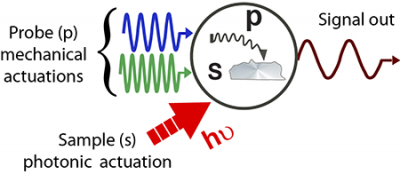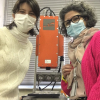
The Hybrid Photonic Mode-Synthesising Atomic Force Microscope is unique, according to principal investigator Ali Passian of ORNL’s Quantum Information System group. As a hybrid, the instrument, described in a paper published in Nature Nanotechnology, combines the disciplines of nanospectroscopy and nanomechanical microscopy.
“Our microscope offers a non-invasive rapid method to explore materials simultaneously for their chemical and physical properties,” Passian said. “It allows researchers to study the surface and subsurface of synthetic and biological samples, which is a capability that until now didn’t exist.”
ORNL’s instrument retains all of the advantages of an atomic force microscope while simultaneously offering the potential for discoveries through its high resolution and sub-surface spectroscopic capabilities.
“The originality of the instrument and technique lies in its ability to provide information about a material’s chemical composition in the broad infrared spectrum of the chemical composition while showing the morphology of a material’s interior and exterior with nanoscale resolution,” Passian said.
Researchers will be able to study samples ranging from engineered nanoparticles and nanostructures to naturally occurring biological polymers, tissues and plant cells. The first application as part of DOE’s BioEnergy Science Center was in the examination of plant cell walls under several treatments to provide sub-micron characterisation. The plant cell wall is a layered nanostructure of biopolymers such as cellulose. Scientists want to convert such biopolymers to free the useful sugars and release energy.
An earlier instrument, also invented at ORNL, provided imaging of poplar cell wall structures that yielded unprecedented topological information, advancing fundamental research in sustainable biofuels. Because of this new instrument’s impressive capabilities, the researcher team envisions broad applications.
“An urgent need exists for new platforms that can tackle the challenges of sub-surface and chemical characterisation at the nanometre scale,” said co-author Rubye Farahi. “Hybrid approaches such as ours bring together multiple capabilities, in this case, spectroscopy and high-resolution microscopy.”
The hybrid microscope consists of a photonic module that is incorporated into a mode-synthesising atomic force microscope. The modular aspect of the system makes it possible to accommodate various radiation sources such as tuneable lasers and non-coherent monochromatic or polychromatic sources.










